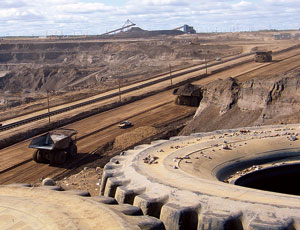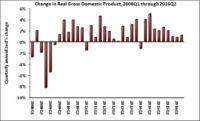The pace of oil-and-natural-gas-related engineering and construction work has been nothing short of frenetic over the past several years, with global engineering and construction giants scrambling to find qualified professionals to staff a slew of multibillion-dollar projects. But the combined effects of falling energy prices, a slumping global economy and the lingering credit crisis are raising doubts about whether the world’s largest energy companies will continue to keep their capital investments flowing in 2009 and 2010.

The international market for designing and building oil-and-gas collection systems, pipelines, refineries and liquefied natural-gas facilities has been strong for years, and the recent run-up in energy prices had left nationally owned and investor-owned oil and gas companies flush with cash and eager to invest in projects that would help them keep pace with growing demand. But as energy prices sagged this summer and fall, entities ranging from the Organization of Petroleum Exporting Countries to oil and gas companies said they are reviewing their 2009 expansion plans and may delay some projects.
Still, the long lead time for developing multibillion-dollar energy projects—plus the current bonus of depressed prices for steel, copper, concrete and other building materials—may keep engineering and construction activity going in most parts of the energy sector, at least for a while.
Some E&C giants see continued good times ahead. Clinton, N.J.-based Foster Wheeler, for example, this fall lined up a front-end engineering design (FEED) and project management consultancy (PMC) on a refinery upgrade in South America, the largest-ever FEED/PMC in manhours booked for Foster Wheeler USA, the company says. Foster Wheeler also will perform FEED/PMC for a new refinery in Libya and FEED for a gas field development in Algeria.
The news also has been good at London-based Petrofac, which in November was awarded a lump-sum, $543-million engineering, procurement and construction (EPC) contract by Kuwait Oil Co., Ahmadi, Kuwait, for an 87-mile 40-in.-dia. pipeline that will run from northern Kuwait gas fields to KOC’s Mina Al-Ahmadi refinery. The work will take 21 months.
Eyeing other big projects in the Persian Gulf region, Petrofac and Abu Dhabi-based Mubadala Petroleum Services Co. earlier this fall established a joint venture called Petrofac Emirates LLC that will provide EPC services for onshore oil and gas, refining and petrochemical projects throughout the United Arab Emirates.
While the Middle East continues to be a key market, emerging markets such as Southeast Asia and the former republics of the old Soviet Union are rapidly gaining in importance. For example, a joint venture of Aker Solutions, Lysaker, Norway; Sydney-based WorleyParsons; and The Hague office of CB&I this fall secured a letter of intent that could lead to a significant amount of FEED work at the Kashagan oil field in the northern Caspian Sea in Kazakhstan.
The field is being developed by a consortium of Agip, ENI, ExxonMobil and several other energy companies. Aker CEO Simen Lieungh, whose company, along with WorleyParsons, already was involved in the initial phase of the Kashagan project, says the field is “at the core of our strategy for our international field development business.” The full-field FEED contract that Aker, WorleyParsons and CB&I are poised to land involves design and other work for offshore and onshore facilities, including pipelines, the companies say. They believe the deal may lead to FEED work on other oil fields in the region.
Moving Ahead
Chiyoda Corp., Yokahoma, Japan, in October won an EPC contract to build an LNG plant and associated export facilities in Papua, New Guinea for a joint venture of ExxonMobil and several other energy companies. The project, for which no dollar value is disclosed, includes elements for inlet processing, treating, liquefaction, storage and loading of 6.3 million tons per year of LNG. The first LNG cargo is expected to be shipped in late 2013 or early 2014.
“In overseas markets, plans for the construction of new plants around the world continues to be driven by growth in global energy demand,” Chiyoda says in a statement. But the company is worried. “In Chiyoda’s operating environment, there is concern over declining investment due to the shrinking financial market, and the substantial drop in the price of crude oil has had some effect. Chiyoda will continue to pay attention to economic conditions and their impact,” it says.
Most energy companies appear to be sticking to their capital-investment plans, at least for now. David Rosenthal, vice president of investor relations at ExxonMobil, told analysts in late October that his company’s “first priority is to fund our very robust investment program,” which calls for spending “in the league of $25 billion to $35 billion a year in [capital spending] over the next five years. And we have no change to those plans at this time. The projects are progressing as we expected,” despite the weakening economy and lower energy prices, he said.
ConocoPhillips also is holding firm, says James Mulva, chairman, president and CEO. “We expect that we will most likely have a capital program in 2009 that looks a lot like what we’re going to experience in 2008, which is in the neighborhood of, say, $15 billion.”
Just a few months ago, when oil prices were topping $140 per barrel, the companies developing the oil-sands deposits in western Canada were scrambling to expand production capacity. The recent collapse of crude-oil prices, however, has put a real crimp in their plans because oil prices need to remain consistently above $50 or even $60 bbl for oil-sands petroleum products to make economic sense.
Suncor Energy, a leading oil-sands developer based in Calgary, Alberta, this fall cut back its 2009 capital-spending plans by more than one-third, to $6 billion, and said ït expects to maintain that lower annual investment level through 2012.
“Our aim is to ensure we are living within our means during a time of market uncertainty,” says Suncor President and CEO Rick George. He notes that his company has delayed by one year, to 2013, its plan to add a third bitumen-extraction “upgrader” at its $16-billion Voyageur oil-sands project, and may slow the pace of the fifth and sixth stages of its in-situ oil-sands extraction plan.
Petro-Canada, another Calgary-based oil-sands giant, says it is considering a delay in a “final investment decision” on its Fort Hills mining and upgrading project in part because the soaring costs of construction materials, labor and other items had pushed up the project’s estimated cost by about 50% since mid-2007.


Post a comment to this article
Report Abusive Comment